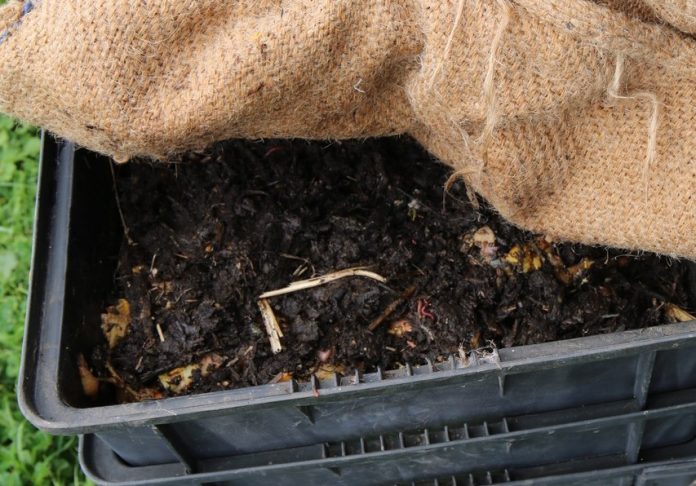Compost worms really don’t like sunlight. When exposed to the sun they are likely to dry out and are also susceptible to getting picked up as breakfast by an early bird, so they do best to stay just below the surface of whatever they are feeding on.
Understanding these worm vulnerabilities can help us operate a successful compost or worm system that meets the needs of our worm helpers. Enter the ‘worm blanket’.
We can buy commercially available ‘worm blankets’, sized to snuggly fit worm-farms or Gedye bins. Usually made of coir (coconut husk), they help keep the surface of the actively decomposing material dark and moist, helping the worms feel safe and allowing them to work right up to the top of the composting pile.
Our worms won’t care if we don’t buy them a worm blanket, they are great consumers (of organic material), but not particularly consumeristic, so they’ll be just as happy with a repurposed item.
I helped manage an office worm farm that lived on a concrete balcony. Despite being placed in the shadiest spot, it got pretty hot and dry in summer, not the greatest conditions for captive worms! The addition of a worm blanket – a coir door-mat salvaged from hard rubbish – made the world of difference to how happy, cool and moist our worms were in that less-than-ideal environment.
So, look out for old coir doormats, but used hessian bags, particularly a few layers of them, make a fine worm blanket and any old clothes or fabric (just make sure they are made of 100 per cent natural fibres) can do the job too. Even straw and leaves (like the carbon cap on our hot compost piles) will work as a worm blanket.
Natural materials make the best worm blankets, but keep in mind our worms will eventually eat the natural, carbon-rich fibres of the blanket. This will happen much quicker if we are forgetting to add enough other carbon-rich material (straw, autumn leaves, torn up egg cartons etc.) along with any nitrogen-rich food scraps we are feeding them. Worms, like compost microbes (and humans), do better with a balanced diet.
Each time we add to our compost pile or worm farm, we’ll need to lift up, or off, our worm blanket and add our balanced compost recipe for that visit. After, we return the blanket and tuck our worms in to keep doing their work.
The worm blanket will also be a good indicator of moisture, if it is dry, definitely time to add some water.
Remember, compost worms aren’t just in worm farms. We’ll find them doing much of the decomposition work in cool, Gedye-style compost bins (free-range worm farms) and in the later, cool phase, of hot composting.
Have you used a worm blanket? Do you have any great tips for repurposed materials that do this job well?
– Joel Meadows works with *Yes In My Back Yard, (YIMBY), a community-scale composting initiative in Castlemaine and surrounds. Send questions or comments to hello@yimbycompost.com, or to book in for a compost workshop.








